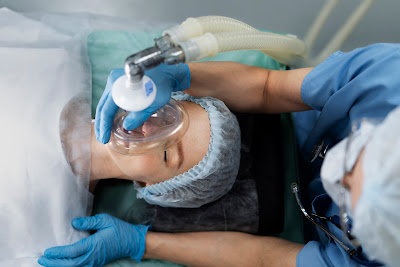Life on the Line: Decoding Critical Care fundamentals the Crucible of the Golden Hour Emergency
Critical Care Medicine is a highly specialized field within healthcare that focuses on the comprehensive management of patients grappling with life-threatening conditions. From severe injuries to complicated illnesses, critical care physicians play an indispensable role in delivering immediate and intensive care to stabilize patients and enhance their chances of recovery. Let's delve deeper into the process of how doctors handle emergencies in this critical situation. That’s why a Fellowship in Critical Care is necessary and very important in today’s healthcare.
The Ticking Clock: Less Time For ActionCritical Care Medicine is characterized by its prompt response to emergent situations. Whether dealing with a trauma victim, a patient in shock, or someone experiencing respiratory failure, time is of the utmost essence. The rapid and decisive actions taken during this critical hour can make a significant difference in a patient's outcome. The ability to make swift decisions and initiate timely interventions is a hallmark of success in the high-stakes environment of critical care.
Collaboration is Key: A Multidisciplinary ApproachIn the realm of critical care, collaboration is not just encouraged; it is a necessity. Critical care teams typically consist of intensivists, nurses, respiratory therapists, pharmacists, and other specialists. The synergy of diverse expertise ensures a comprehensive and holistic approach to patient care. This multidisciplinary collaboration enhances the efficiency of interventions, contributing to the overall success in managing critically ill patients.
Precision in Decision Making: The Role of IntensivistsIntensivists, physicians specialized in critical care, stand at the forefront of decision-making. They conduct detailed patient histories, perform suitable diagnostic tests, and make clinical observations to formulate precise treatment plans. The ability to assess and adapt to dynamic situations is a skill honed by these medical professionals, allowing them to navigate the complexities of critical care with finesse.
Continuous Vigilance: The Art of MonitoringIn critical care units, monitoring is not an occasional task; it is a continuous and meticulous process. From vital signs to organ function, every aspect of a patient's status is closely watched. Advanced technology plays a pivotal role, aiding in real-time assessment and enabling immediate adjustments to treatment strategies. The constant vigilance exercised in critical care units ensures that any deviation from the norm is promptly addressed, preventing potential complications.
The Nexus of Research and EducationOngoing research is the lifeblood of critical care practices. Continuous education and training for healthcare professionals in this field are essential to keep up with evolving standards and technologies. The dynamic nature of critical care demands a commitment to staying abreast of the latest advancements, ensuring that patient care is not only current but also at the forefront of medical innovation.
In conclusion, Medvantage’s Critical Care Medicine course stands as one of the most sort after courses in the realm of healthcare, dedicated to the immediate and intensive care of those facing life-threatening conditions. With a commitment to rapid response, interdisciplinary collaboration, and technological innovation, critical care professionals strive to navigate the complexities of medical urgency and pave the way for improved patient outcomes in the crucial hour of emergency. The delicate dance between time, collaboration, precision, vigilance, and knowledge defines the essence of Fellowship in Critical Care Medicine, making it an indispensable cornerstone in the continuum of patient care.



Comments
Post a Comment